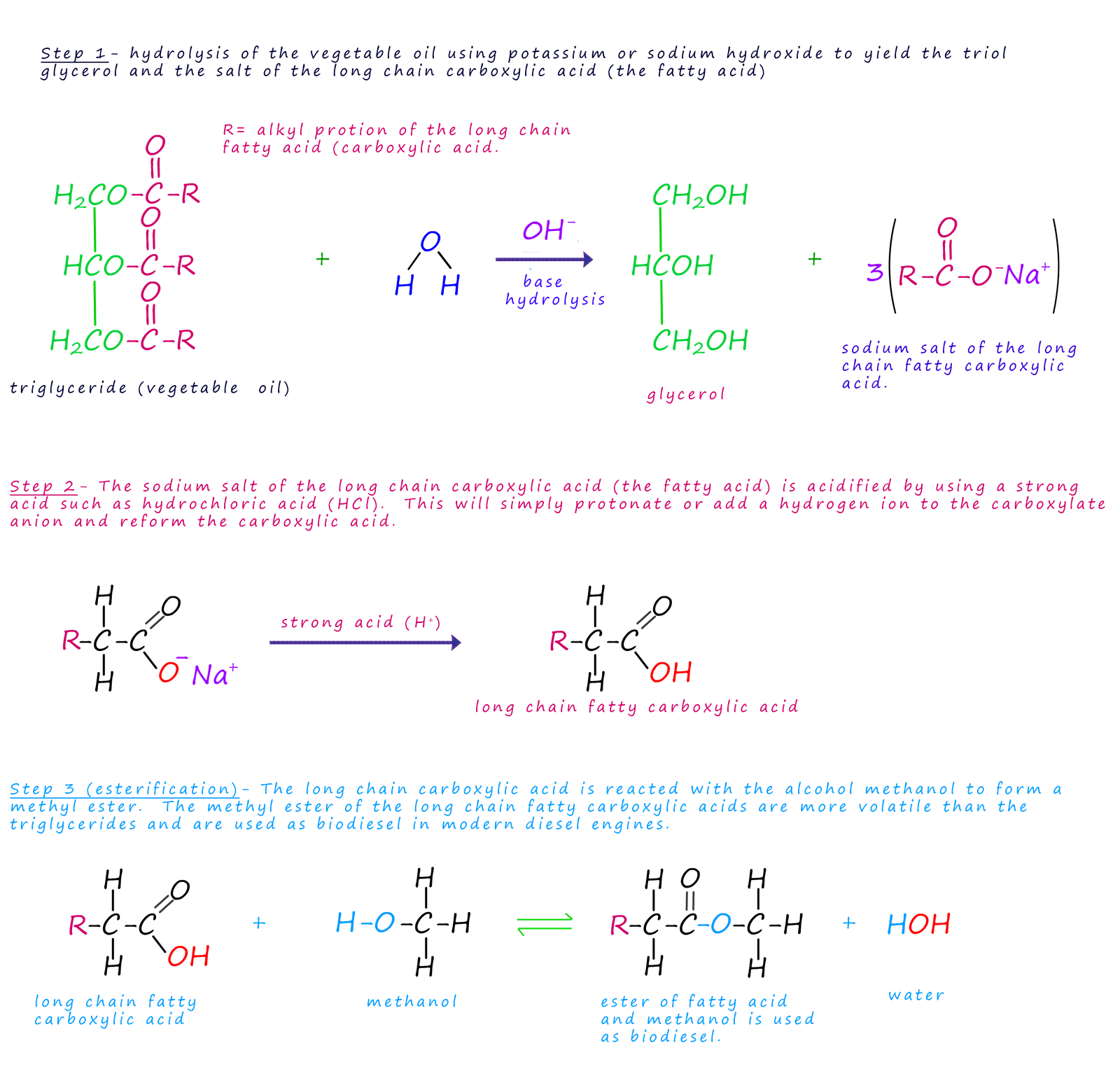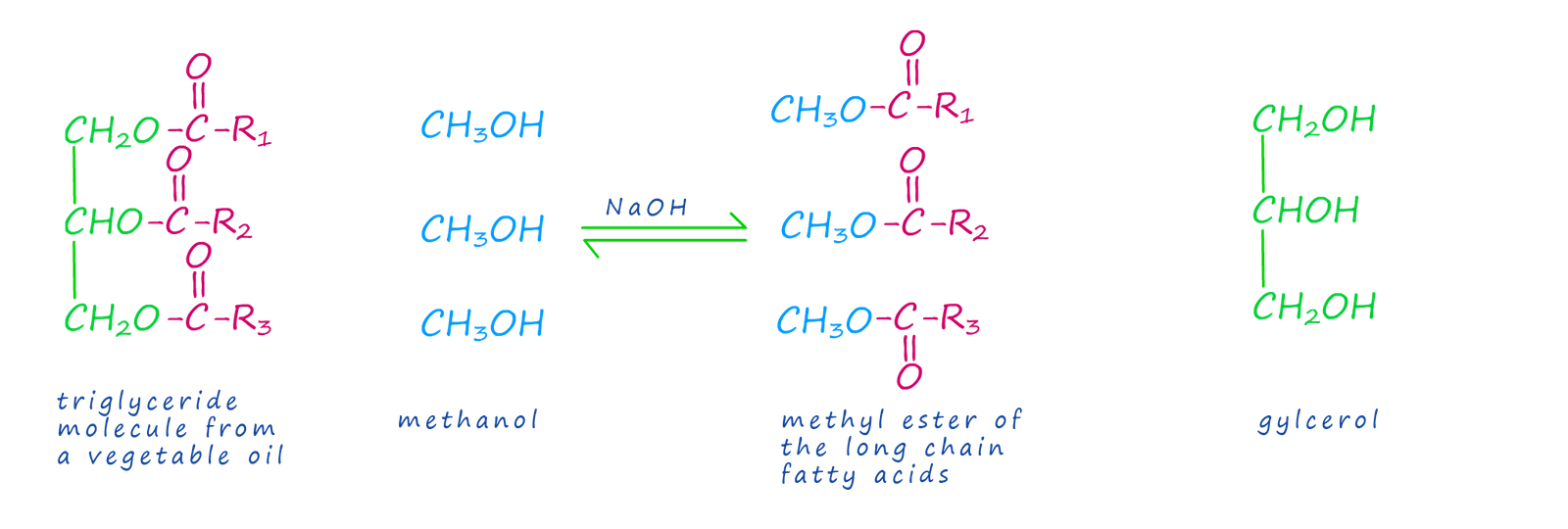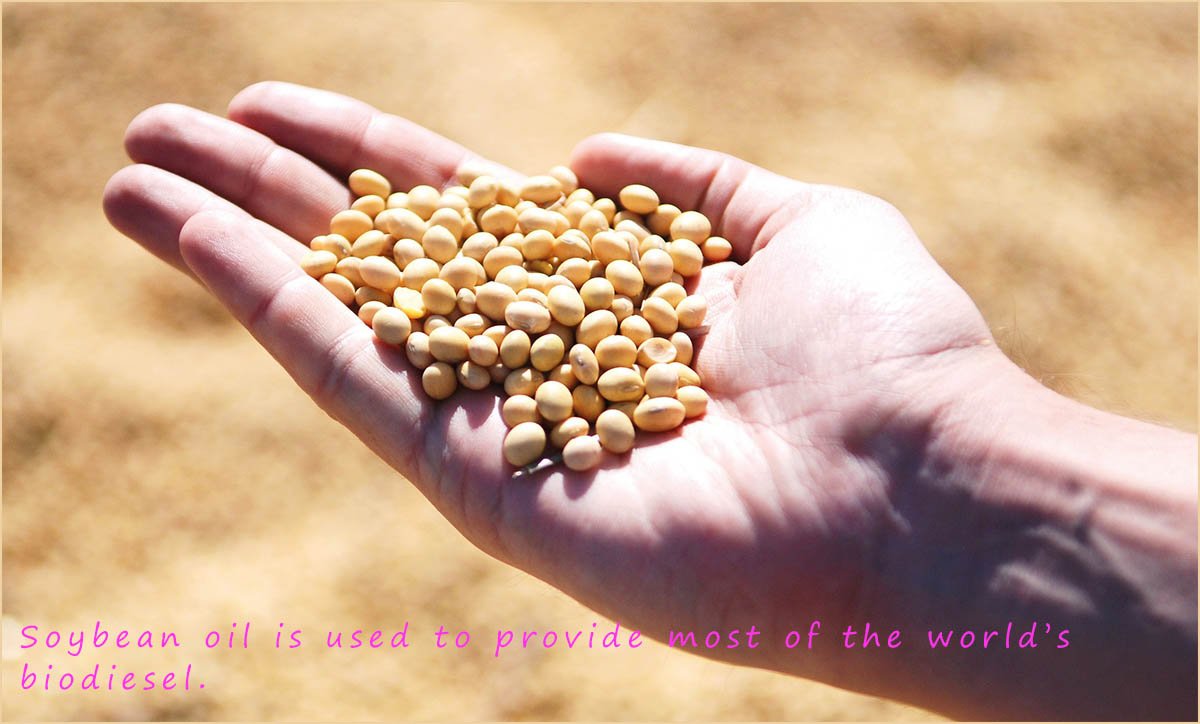

With the current climate emergency and the rising costs of crude oil and fossil fuels it is in everyone's interest
to develop and expand our use of renewable energy resources. Biodiesel is a fuel that can help reduce the
harmful emissions from motor vehicles and other forms of transport.
Biodiesel can be produced from mainly from vegetable oils including
rapeseed oil, soybean oil and corn oil with around 20% produced from animal fats.
Biodiesel can also be produced from waste and recycled cooking oils. Biodiesel is most often sold as a blend of up to 5 percent biodiesel mixed with petroleum diesel. The triglyceride molecules present in vegetable oils contain large amounts of stored energy in their chemical bonds and will burn exothermically to release large amounts of energy; indeed some older diesel engines
in cars and trucks will burn vegetable oil and run quite well without any major modifications to the engine. However for many modern diesel engines vegetable oils are simply not volatile enough to combust efficiently enough inside the engine.
The long chain fatty acids present in the triglyceride molecules in vegetable oils resemble the long alkane chain present in many motor fuels obtained from crude oil, however
many modern diesel engines will not run efficiently on vegetable oils simply because the vegetable oil is not volatile enough and it will clog up some of the working parts inside the diesel engine. What is needed is a way to make the vegetable oil more volatile, which will make it a more efficient fuel. This could be done by hydrolysing or breaking up the triglyceride molecules in the vegetable oil into the fatty acids and glycerol that make up the triglyceride molecule. The long chain fatty acids produce could then be converted in esters which are volatile enough to be used as fuels. The fatty acids obtained are reacted with the two most widely available alcohols; methanol and ethanol to convert them into methyl esters and ethyl esters. We could imagine this happening in a series of steps as shown below:
This process of converting the vegetable oil to a methylester is outlined below:

The final esterification step is a reversible reaction and a large excess of methanol is needed to force the equilibrium position to the products side and increase the yield of the methyl ester of the fatty acid.
The methyl esters of long chain fatty acids discussed above can be used as a biofuel or biodiesel. They are volatile enough to burn cleanly inside diesel engines to produce less sooty particulates, less sulfur dioxide, carbon monoxide and less greenhouses gases. The triglycerides in rapeseed oil in the UK can be converted in biodiesel in a process called transesterification. This transesterification process involves swapping out the alcohol or triol glycerol for methanol or ethanol, to produce new methyl ester or ethyl esters linkages. These methyl and ethyl esters which are produced from this transesterification process have approximately the same viscosity as diesel obtained from crude oil. During this process a vegetable oil such rapeseed oil is heated with a sodium or potassium hydroxide catalyst in the presence of methanol to produce the methyl esters of the long chain fatty acids and the triol glycerol. The reaction is reversible so a large excess of the alcohol methanol is used to force the equilibrium to the right hand side. However despite reaction being a reversible one the yields are very high; in the order of 98%. An equation for this base catalysed transesterification process is given below:

The glycerol produced is also a valuable raw material and is sold to the pharmaceutical and cosmetics industries.
On the face of it using biodiesel seems like a good idea, when compared to diesel obtained from crude oil it reduces the emissions of:
